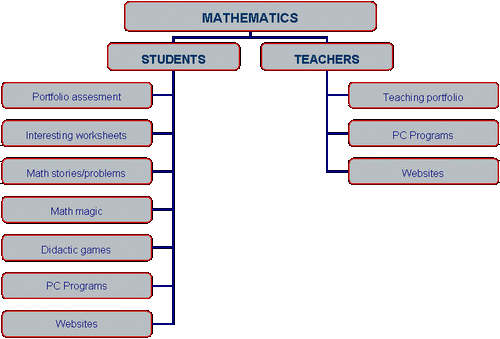»Within me burns a flame which has been passed from generations uncounted and its heat is a constant irritation to my spirit to become better than I am, and I will. I will fan this flame of dissatisfaction and proclaim my uniqueness to the world.”
The Greatest Salesman In The World, Og Mandino
INSTRINSIC vr. EXTRINSIC MOTIVATION
MOTIVATIONAL RESOURCES IN MATH CLASSES
Motivation is one of the most important psychological processes. It is constantly interactive, changing and it enables us to be unique and one-off (Krajc, 1982). It is a process of challenging, controlling and coordinating one's activity which would eventually lead him to his goal. It is also a process of satisfying the need which was the source of motivation in the first place. (Marentič-Požarnik, 1988; Razdevšek-Pučko, 1999). It encompasses all forces and motivational powers of our being. The motive, however, cannot be fulfilled is there not for an adequately motivated behaviour or an »inner state, that arouses, directs and maintains our behaviour« (Woolfolk, 2002, pg. 318). Every human activity is motivated. Motivation enables one to satisfy a need, a goal, which he has set for himself or has been set for him (Razdevšek-Pučko, 1999).
The process of learning is governed by academic motivation, which, according to Marentič-Požarnik (2000, pg.184) is a »common term for all types of motivation in a learning environment. It considers everything that stimulates it, directs it, defines its intensity, duration and quality«. It is a mixture of permanent traits of one's personality and the characteristics of the learning situation in question. It could also be defined as a student's tendency to search for academic activities, which are reasonable and worthwhile (Woolfolk, 2002).
INSTRINSIC vr. EXTRINSIC MOTIVATION
The intrinsic motivation is an innate and a natural inclination that enables our mental abilities to develop through learning, which is not driven by external reinforcements. (Stipek, 1998). This actually resources that an intrinsically motivated person does not cling to external goals, such as a reward, a good mark, an acknowledgment and recognition. He is run by intrinsic incentives like curiosity, interest, excitement, enthusiasm and a positive self-image, that trigger a process of motivation immediately (Razdevšek - Pučko, 1999). The goal of the activity is the activity itself, the whole process is more important than the result, and the source of willpower is in the person himself. (Marentič-Požarnik, 2000).
Extrinsic motivation, on the other hand, is a cluster of external reinforcements, which arise from the environment and society and are indirect. They are used by someone from the outside (parents, teachers, schoolmates, peers) in order to trigger a process of motivation (Razdevšek-Pučko, 1999). A person who is motivated by these incentives acts upon them because of the possible consequences such as a reward, punishment, recognition, assessment and marking. The activity itself is of no interest to him, work is just »a resources of attaining positive and avoiding negative consequences« (Marentič-Požarnik, 2000, pg. 188). The individual is motivated by a foreseen result, which has been set as a final goal of action. This kind of result, therefore, is more important than the process and the source of the willpower comes from the outside. Extrinsic motivation is not likely to be permanent. Should the source of willpower be no longer existent, the activity stops.
MOTIVATIONAL RESOURCES IN MATH CLASSES
Intrinsic motivation is the key to a process of good quality and a good result. Unfortunately, it does not inspire all students. In this case, we use extrinsic incentives and a lot of positive stimulation to trigger the action. External rewards should only be used when students feel too incompetent to experience intrinsic interest in the topic. Moreover, they may also be used when the lecture tends not to be interesting and the follow-up exercises are monotonous and boring. (Spaulding, 1992, pg. 56). It can therefore be seen that any external encouragement (rewards, recognition) may have a negative effect when misused.
Therefore I would like to introduce some other resources of extrinsic motivation in the following segment. These instruments can be used beside a reward and praise, especially when we wish to change our way of teaching and encourage or make the intrinsic learning motivation even stronger.
This web page is trying to answer a teacher's well-known question: How can I change my way of teaching to maintain or increse mine or/and student's intrinsic motivation?
